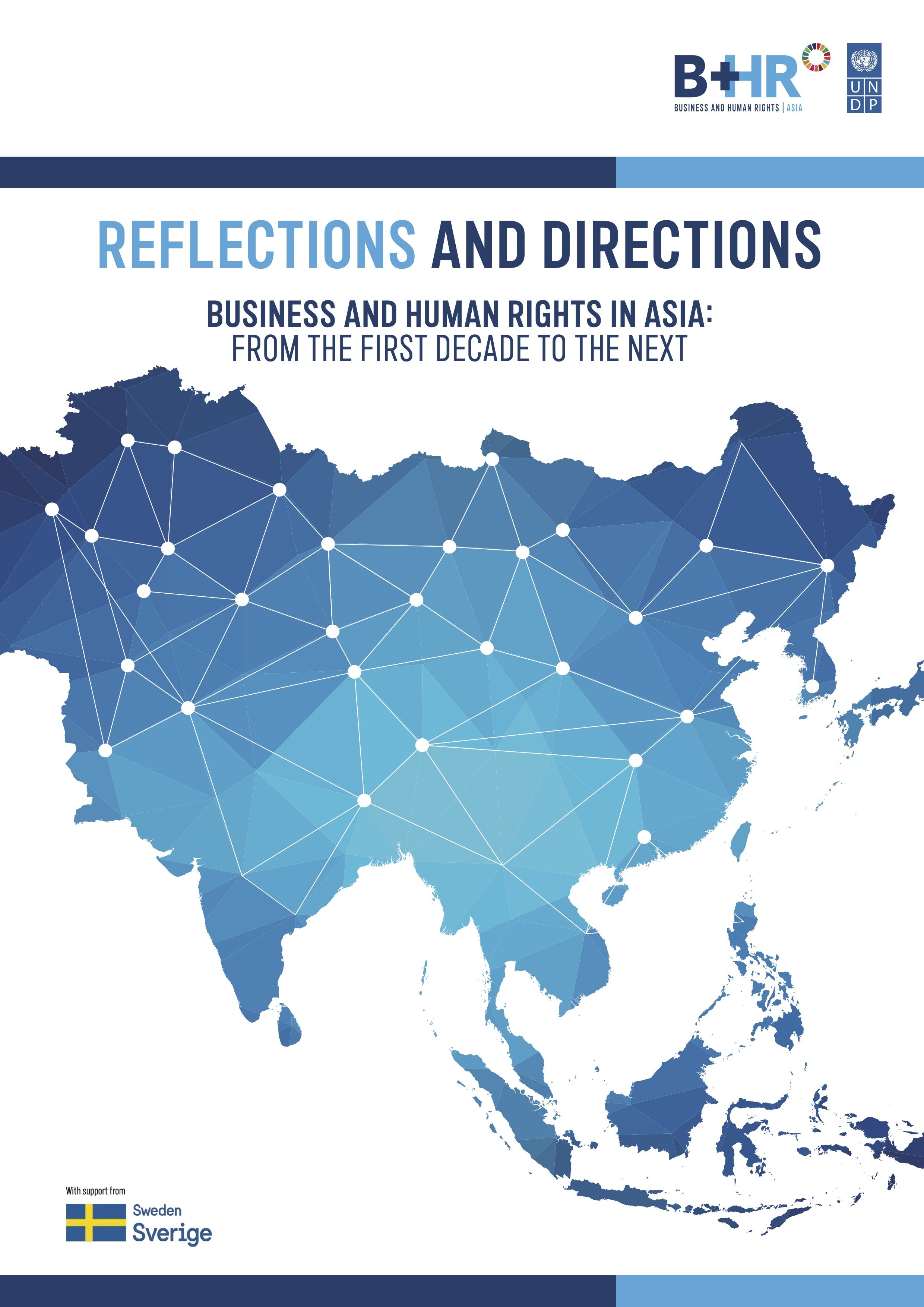Reflections and Directions − Business and Human Rights in Asia: From the First Decade to the Next
UNDP Press Release: https://www.undp.org/publications/reflections-and-directions-business-and-human-rights-asia-from-first-to-next-decade
The landmark UNDP report Reflections and Directions, which surveys the implementation of the UN Guiding Principles on Business and Human Rights (UNGPs) in Asia, captures both signs of progress and calls for a radical shift. The more than 100 experts and practitioners who informed the report conveyed both optimistic and cynical views on the state of business and human rights (BHR) in Asia. Important victories have been won since the unanimous endorsement of the UNGPs in 2011. These include the adoption of Asia’s first National Action Plans (NAPs) on BHR, an uptick in corporate human rights policies, particularly amongst publicly listed businesses, and the birth of regional BHR partnerships and initiatives. Nearly all of this progress was made in a concentrated five-year window. It was not until the Seminar on Promoting CSR & Human Rights in ASEAN, organized by the ASEAN CSR Network in partnership with UNDP in November 2016, that the UNGPs gained traction in the region. Progress has not been linear nor predictable and BHR is moving at very different speeds across the region. The COVID-19 pandemic has stalled or in some cases reversed advancements. Still, the UNGPs have found footing and appear to be here to stay in Asia. This alone seems cause for hope.
At the same time, many informants raised concerns about the disconnect between progress on paper and the realities on the ground. Uptake of the UNGPs has been achieved through largely if not exclusively top-down strategies. This has led to an influx of commitments and claims while the situation for affected individuals and communities remains unchanged or even worsening. To quote the report, “the pervasive feeling among stakeholders, particularly those from civil society, is that Asia’s BHR movement is struggling to even reach affected rights holders much less achieve tangible outcomes for them.” Informants reminded that this gap between rhetoric and reality transcends Asia. The field of BHR is still in its infancy and all stakeholders are learning in real time. Nonetheless, the findings in Reflections and Directions echo the conclusions of the MSI Integrity’s decade-long study: current efforts are not achieving the intended results and it is time to rethink not only the details but the theory of change itself.
The ten-year anniversary of the UNGPs provided an apt opportunity to reflect and recalibrate. When informants spoke of recalibration, they were not talking about making a tweak or filling a gap. They were calling for a radical shift in strategy and function. In Asia, the BHR movement is in its own silo. It is not integrated with other human rights movements and out of reach for most local actors. These substantial gaps reveal an opportunity. Asia features vast and rich networks of grassroots organizations and human rights defenders. These networks are a first line of defense for affected rights holders and a beacon of hope, as solutions in the region are often built from the ground up. If the BHR movement can connect with local movements, forefront affected rights holders, and turn grassroots actors into allies, experts, and agents of change, there is a chance of realizing real world progress and reckoning with the challenges that lay ahead in the next decade.
Informant after informant called for bottom-up BHR in Asia. They are not dismissing the importance of leadership or suggesting that BHR abandon top-down change. They are contending that now is the time to focus on change from below. Now is the time to shift the fields attention and resources to the grassroots. That is how BHR can break out of its silo and begin to achieve the tangible results for affected individuals and communities that the UNGPs call for.

